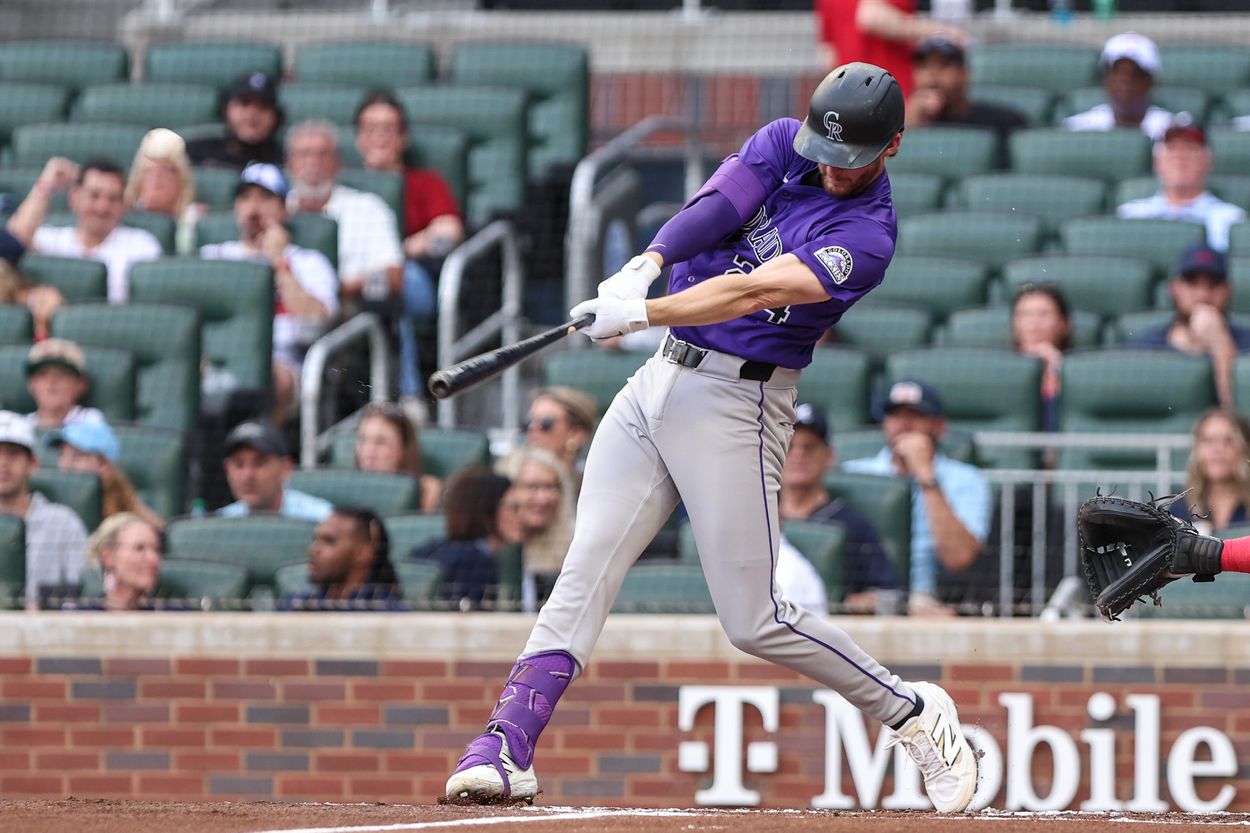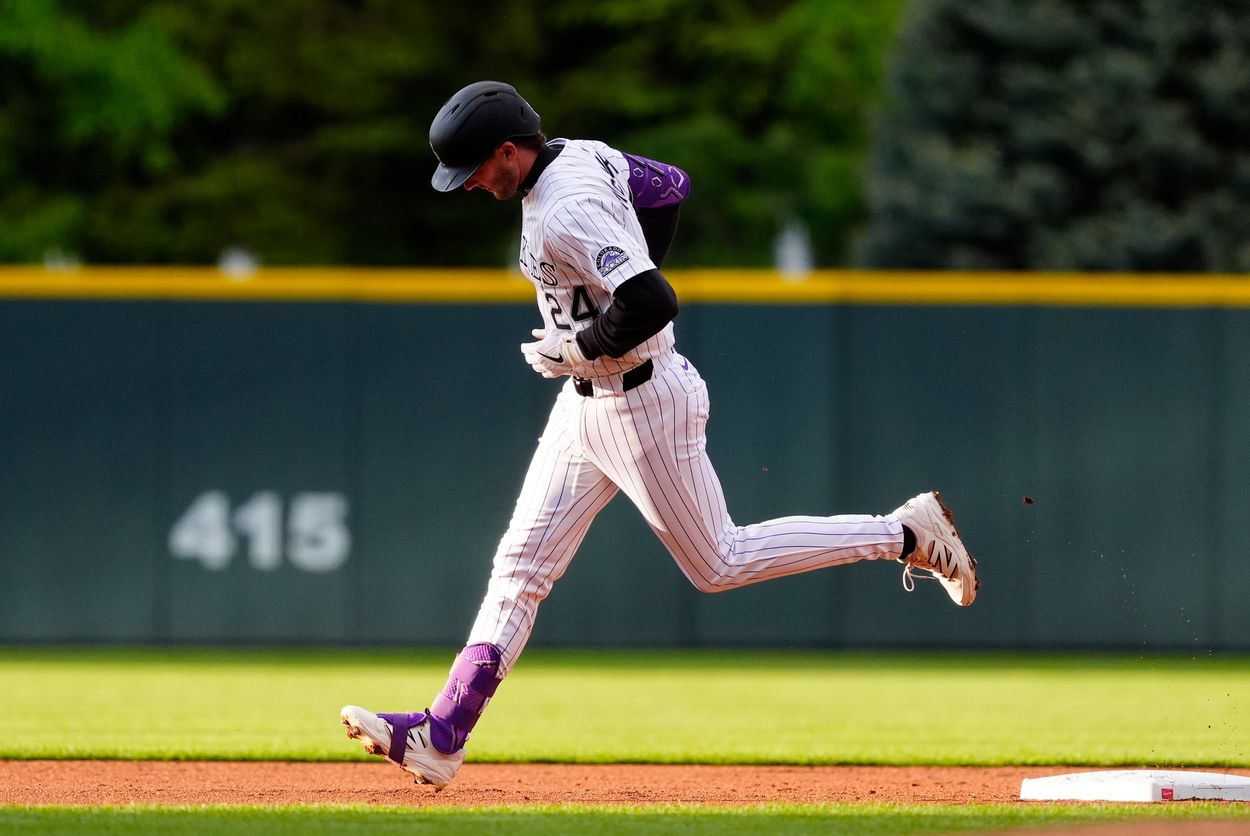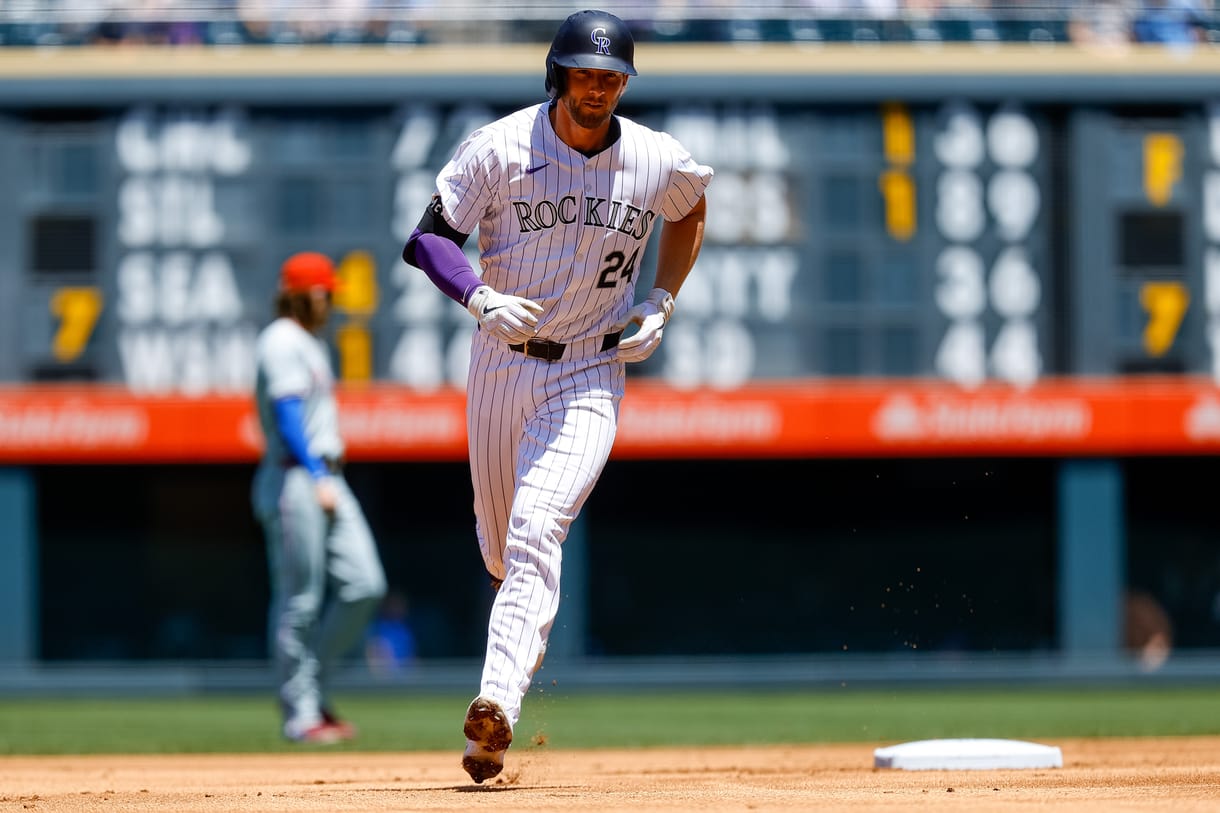
The Yankees may prefer Eugenio Suarez to fill their third base void, but Ryan McMahon remains a potential backup option.
According to Jon Heyman of the New York Post, the Yankees have shown interest in McMahon, who brings elite defense and lefty power.
While his bat has been all over the place, the Yankees could view him as a defensive upgrade over their internal options.
Still, McMahon’s offensive inconsistencies and remaining salary make this a complicated fit for a win-now roster.

McMahon’s bat remains streaky despite promising underlying power
Ryan McMahon is hitting just .212/.308/.376 this season, with 13 homers and 28 RBIs in 92 games for Colorado.
He’s striking out in 32.1% of his plate appearances, and his slugging percentage is at its lowest point since 2018.
Yet somehow, the underlying metrics tell a more optimistic story than the stat line might suggest at first glance.
McMahon ranks in the 95th percentile in average exit velocity and the 79th percentile in hard-hit rate, both impressive marks.
His barrel rate is also solid at the 74th percentile, meaning when he connects, the ball jumps off his bat with force.
Plate discipline remains the glaring red flag
The problem is that McMahon simply doesn’t make enough consistent contact to capitalize on his raw power potential.
He ranks in the 1st percentile in whiff rate and the 2nd percentile in strikeout rate — among the worst in the league.
Pitchers have figured out that he’s vulnerable in the zone, often chasing high fastballs and low breaking balls alike.
That lack of plate discipline makes him an easy target in big moments, which becomes a liability in postseason matchups.
His platoon splits offer no comfort either — he’s hitting .214 against lefties and .211 against right-handers in 2025.

Defensively, McMahon is among the league’s best at third
Where McMahon really shines is with the glove, providing a level of defensive stability the Yankees covet.
This season, he’s logged 770 innings at third base with a .977 fielding percentage, four defensive runs saved, and four outs above average.
His footwork, arm accuracy, and instincts all grade out well, especially on sharp liners and bunts down the line.
Even in a slump, McMahon could improve the Yankees’ infield defense overnight, something they’ve lacked all season.
Adding that kind of glove would support pitchers already stretched thin due to injuries and inconsistencies on the mound.
Financial commitment doesn’t match current production
McMahon is under contract through 2027, still owed $37 million over the next two years — $15 million in 2026 alone.
He technically has an opt-out after 2025, but it would only activate if he finishes top five in MVP voting — extremely unlikely.
That long-term commitment, tied to an unpredictable bat, complicates the Yankees’ interest, especially given current payroll pressures.
The team is already over the luxury tax threshold and wary of adding more volatility to a roster built for October.
- Should the Yankees go after this switch-hitting infielder at the deadline?
- Yankees’ Aaron Boone makes trade deadline plans painfully obvious
- Yankees’ switch-hitter is primed for a second-half explosion
Yankees weighing upside against volatility
The Yankees are chasing McMahon’s .889 OPS from May and his .773 OPS from June, hoping those flashes can be replicated.
But they’re also aware of how volatile his game is — elite defense paired with streaky, feast-or-famine offense.
Compared to internal names like Oswald Peraza or Jorbit Vivas, McMahon’s bat offers more upside, but the cost is significant.
If they can acquire him without giving up premium assets, he could be a worthwhile gamble — but it’s far from a perfect fit.
!function(){var g=window;g.googletag=g.googletag||{},g.googletag.cmd=g.googletag.cmd||[],g.googletag.cmd.push(function(){g.googletag.pubads().setTargeting(“has-featured-video”,”true”)})}();